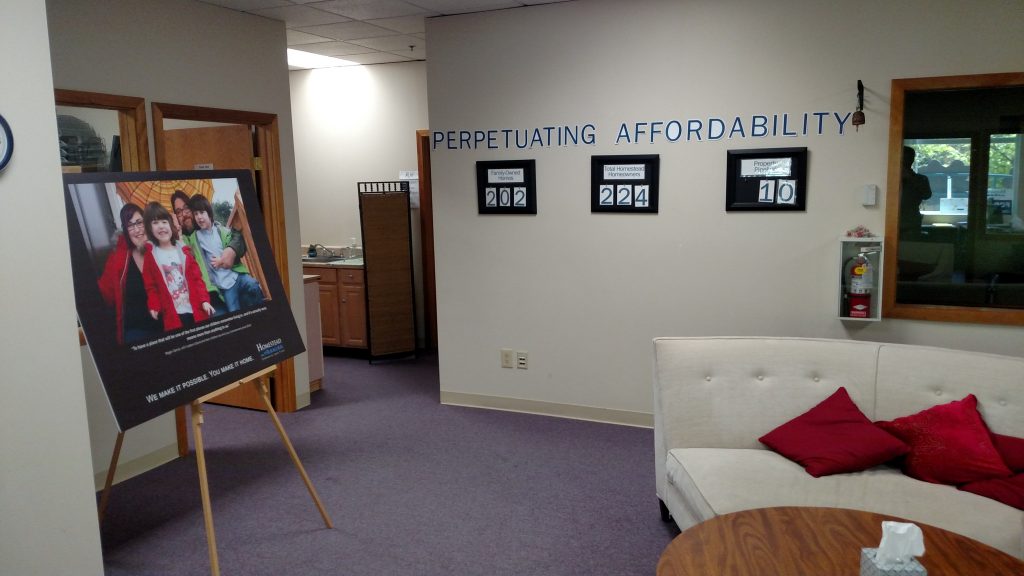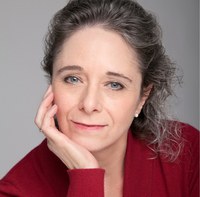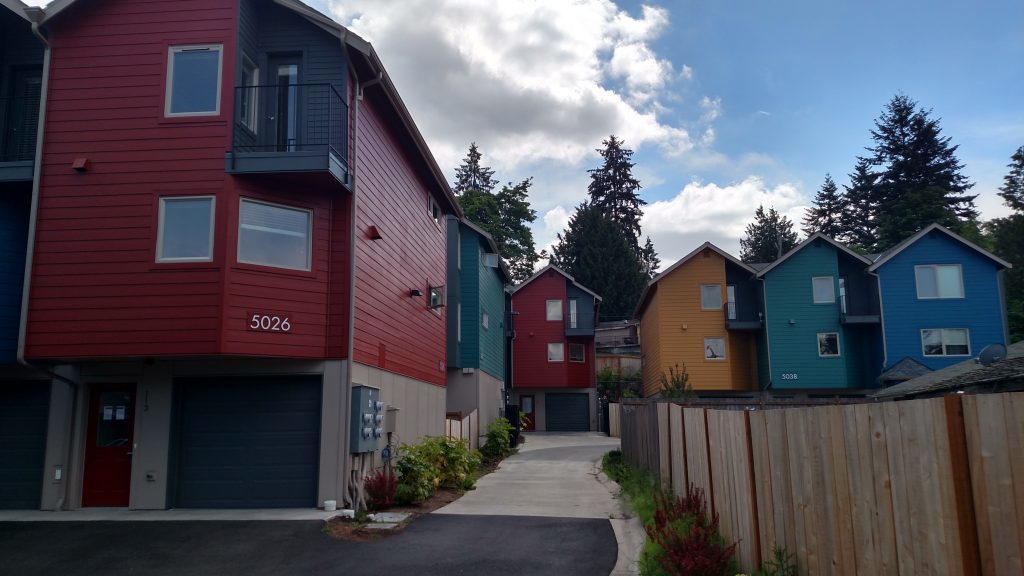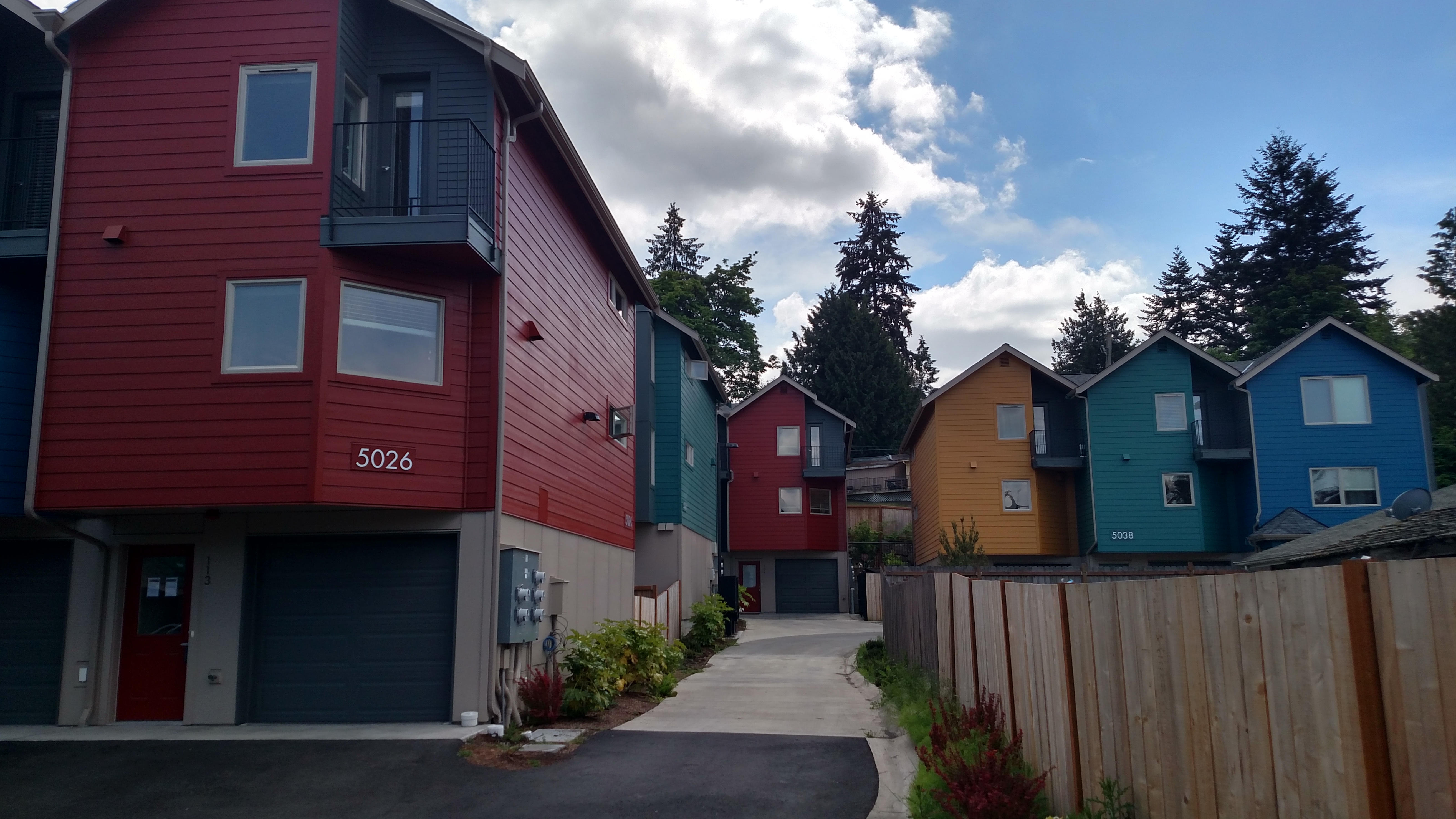It’s no secret that Seattle is in the midst of a housing crisis. Zillow estimates that Seattle’s median rent is up 12.1% from 2015 to 2016. Seattle’s median rent has now reached the intimidating height of $2,429. That rate of rent jump led the nation, as other markets, apparently, cooled off a smidgen. Seattle needs all the tools in the proverbial box to tackle such a profound problem. One that doesn’t often get much attention is community land trusts. Although Crosscut also took a stab at the topic this week.

What Is A Community Land Trust?

I sat down with Kathleen Hosfeld, the Executive Director of Homestead Community Land Trust, which is Seattle’s first and only community land trust. Homestead manages 208 properties and has housed 224 families as of April. The way it works, in a nutshell, is that a family owns the house itself but leases the land on which the house sits in a 99-year ground lease (presently set at $75 per month). This arrangement helps lower the homeowner’s liability for their mortgage, and Homestead helps the family make up whatever difference remains between what the family can afford and the housing cost. Hosfeld explained how the process works:
What we do is we go out and get the public/private investment which goes into the land trust and we consider that the rent. It’s a bridge between what people can afford and the price of the home. That’s a one time investment of almost 30% of each home value which stays in the land trust and it’s associated with the value of the land. Once we create the affordability of the home, the way our system works is the home stays affordable over the long-term—resale after resale. That’s how land trusts work.
What makes community land trust unique from a low income homeowner’s perspective is the ability to accrue equity in their home, although less than in the private market. The contract stipulates that the house remain affordable based on a prearranged formula. “We assume incomes will rise at around 3.9% but the [home’s] appreciation is about 1.5%,” Hosfeld said. “I’m oversimplifying, you can look at our website for more details on that. That’s an average.” Hosfeld added that in some instances, owners accrued about $35,000 in the first five years.
Long-Term Affordability
One key advantage for community land trusts is the longevity of its affordability. Homestead focuses on helping low-income families navigate the difficult process of buying a home for the first time, but the property will remain affordable in perpetuity.
At Homestead a big part of what we do is find these sources of income. And no one source covers it. Downpayment assistance through the city levy is one source. That’s about half of the total. And we’ve got a gap of a $100,000 or more. That said that’s to make the home permanently affordable resale after resale. We aren’t investing that in one home at time. Over a 50 year period that’s going to serve seven families. We think about it that way. That $100,000 subsidy serves a multiplier of families while other forms don’t.
Where Does Homestead Get Its Homes?
“We get our properties a couple of different ways. One is through like minded mission oriented organizations: The National Community Stabilization Trust, a national clearinghouse of REO homes,” Hosfeld said. “We’ve bought homes from other rental entities that had homes they needed to disperse so we bought those and restored them and sold them.” Homestead has had to adjust its strategy as the affordability crisis in Seattle has worsened.
Initially in our program, the prices of homes were such that we had what we called the buyer-driven program where you could close the gap with just one or two sources of down payment assistance. But in about 2008 or 2009, home values began to outstrip that. And at the same time, we started to have our economic downturn. Some of the developers of homes got in trouble and so as the mortgage crisis played out there became pots of money that nonprofits could utilize to take derelict or distressed properties and convert them into low-income home ownership. So Homestead did quite of few of those projects where we worked with builders who couldn’t sell during the recession. So there was acquisition rehab on the one side, sort of new construction even though we weren’t doing it. We were just finishing projects or cleaning them up. And then the third option for us is actual new construction, so to get into the business of low-income real estate development. That’s one of the tracks we are getting into now.
Scaling The Community Land Trust Model
Seattle’s housing crisis is playing out on a big scale. How big of a role can community land trusts play? Hosfeld thinks they can play a big role, especially as they shift their strategy: “We are evolving as an organization that was good at getting subsidy funds to now assuming the risks associated with real estate development. Your question was how do we scale. That’s one of the ways we scale.”

In fact, Homestead just completed “Columbia 26” which is a 26 town-home development in Columbia City. Hosfeld said projects of that scale are very doable: “But the thing that prevents us from doing that are the same things that prevent anybody from doing it: financing is one thing, the price of land, the zoning, land costs, and construction costs—those are going up exponentially as well. It’s really the normal costs and challenges of construction.” Hosfeld thinks Seattle’s community land trusts have quite the opportunity to scale.
People have said CLT is a niche model that can’t scale. Let’s talk about how big do you want it to scale. There’s independent data that calculates the market potential for resale restricted programs in metropolitan areas; they calculated for Seattle at thousands of units per year. Well there’s nobody in Seattle that’s rental or whatever that’s building a thousand units per year. So, if we are talking scaling, we can scale at a reasonable level.
Undoing Seattle’s Legacy Of Housing Discrimination
Homestead was founded to address racial equity and prevent displacement; that remains a core mission.
It’s not just housing it’s what housing represents. We started talking a lot more about what a 100 years of restrictive covenants and FHA [Federal Housing Administration] red-lining and then regular bank red-lining and all that stuff have created a terrible legacy of injustice with African-Americans and minorities. Homestead started in 1992 specifically because we started to see the gentrification happening in the Central District. When we started there was still a majority African-American population in the Central District. Ten years later, by the time we had money and had gotten off our feet, whites outnumbered blacks in the CD 3 to 1—in just ten years. That’s something we still care deeply about. We care deeply about preserving equity…
Homestead backs up their mission with data too: “Over half, 57%, of Homestead homeowning households are households of color. The average Area Median Income (AMI), adjusted for household size of current Homestead homeowners is 57% of AMI. Homestead homeowners are individuals (32%) and families (68%).” An equity mission continues to be crucial even though the days of redlining are mostly over because the lasting effects of racial segregation and disenfranchisement linger. We saw that in 2008 recession and housing crisis which hit blacks and other minorities the hardest and put a disproportionately large dent into black wealth.
Moreover, helping low-income families buy a home for the first time allows them to access the benefits of the mortgage interest deduction which pays out about $70 billion dollars in tax savings per year, most of it to the wealthiest Americans. In fact, in 2012, households making more than $100,000 (roughly equating to the top quintile) claimed 77.3% of mortgage interest deductions savings. The mortgage interest deduction isn’t much of an equity tool given how heavily it’s weighted to the wealthy, but low-income homeowners at least get to access it, whereas renters don’t at all.
How To Support Homestead
I asked Hosfeld what people can do to support Homestead and the first thing she said was, “Support the levy, pass the levy, it’s a good thing.” That’s a great first step and it will be on your primary ballot due August 2nd. To those with the means, Hosfeld also suggested supporting the fund monetarily or with property donation: “If you have a home or real estate and you want to be part of solving the affordability crisis, there are tax advantages to giving. We can work together. It’s about pooling collective assets.”
The homeowners themselves are a crucial part of the solution and care deeply about solving the affordability crisis: “Our homeowners frankly are just as much a part of the solution as anybody because they’re the ones who agree to the resale restrictions,” Hosfeld said. “They’re the ones who say I agree that I will not accrue as much interest in this home as I would otherwise if I owned a market-rate home. And for most of our homeowners, they care deeply about being able to pay forward that opportunity to the next income-qualified buyer.”
Homestead typically has about 300 people on its pre-qualified waiting list. Those interested in applying can find out more online. Hosfeld said thousands more families could qualify and be interested in the program if they knew more, pointing to a 2007 study by Robert Lessor.
Doug Trumm is publisher of The Urbanist. An Urbanist writer since 2015, he dreams of pedestrian streets, bus lanes, and a mass-timber building spree to end our housing crisis. He graduated from the Evans School of Public Policy and Governance at the University of Washington in 2019. He lives in Seattle's Fremont neighborhood and loves to explore the city by foot and by bike.


